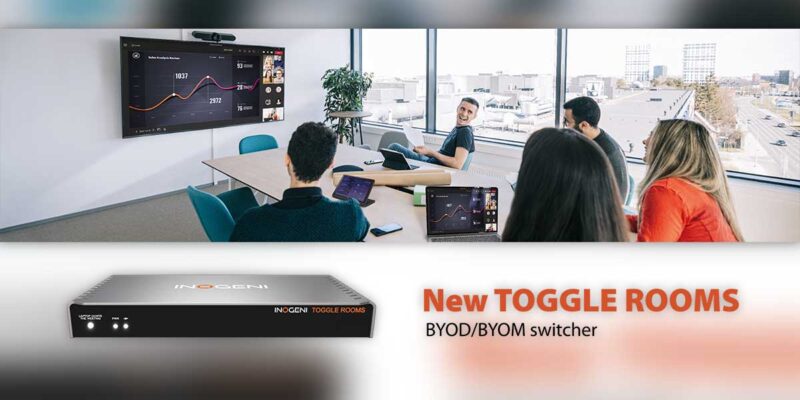AV and BYOD — The Landscape Ahead
 Have you read and heard enough about mobility and devices yet? The AV industry continues to buzz about the concept of Bring Your Own Device (BYOD) and how it relates to everything from presenting to collaborating to control. However I have to wonder, have the resellers and integrators grasped it as a core concept? I recently read an article entitled “BYOD: The reality behind the buzzword” and then thought to myself, ‘Is this reality in the AV industry or is it still buzz (or should I say “white noise”)?’ Resellers and integrators came to InfoComm in June with the concept planted squarely in their heads (and if not, where have you been?). Did they leave with the information needed to properly identify opportunities and execute a game plan?
Have you read and heard enough about mobility and devices yet? The AV industry continues to buzz about the concept of Bring Your Own Device (BYOD) and how it relates to everything from presenting to collaborating to control. However I have to wonder, have the resellers and integrators grasped it as a core concept? I recently read an article entitled “BYOD: The reality behind the buzzword” and then thought to myself, ‘Is this reality in the AV industry or is it still buzz (or should I say “white noise”)?’ Resellers and integrators came to InfoComm in June with the concept planted squarely in their heads (and if not, where have you been?). Did they leave with the information needed to properly identify opportunities and execute a game plan?
Before getting into that, lets first take a look at mobility in the business world. According to the article, research indicated that around the world 57 percent of full time employees use their personal phone at work in some capacity. While many agree that more personal devices are turning up in the workplace, divisions set in when you start to ask if BYOD is something that should be encouraged. This necessitates a question which AV resellers and integrators must explore when trying to uncover BYOD opportunities — does it exist within that company’s business structure? Do they allow employees to bring their own devices or do they still supply and administer the smart phones, tablets and/or laptops?
IT Managers on the whole sit on the fence where BYOD initiatives are concerned. Most actively encourage personal device usage and are willing to do whatever is necessary to implement program and policy. Some are content to allow users to do what they wish without concern for management (leaving employees to their own devices) and then there are those who are pretty much indifferent to the whole BYOD concept itself. The rest, even though it is a minority percentage, are reported to actively discourage it. Why, even though it is a small percentage, would IT Managers actively discourage BYOD? Are their main concerns about managing those personally owned devices and then the continuous add-ons as the company or organization grows? Is there a great concern for network security? Are they considering document and file download and sharing a potential danger to the organization where sensitive information has a chance of leaking out?
The implementation of a BYOD policy works well for a certain percentage of IT Managers, not so well for others. Some say that it’s just an overall headache for their department. As a result, it causes a somewhat troubling response to just how many in IT Management actually embrace the trend. However, there is no doubt in anyone’s mind in the business, healthcare and education worlds that the trend is on an upward spiral. As BYOD continues to grow as a necessity in an organization’s overall framework, mobile device management (MDM) becomes an important consideration in policy enforcement and overall security to the network. MDM brings a structured approach to enforcing policy, providing network security and more, hosted on-site within the organization’s network infrastructure or remotely on managed data servers. Lost devices can be wiped to eliminate any sensitive information that can fall into the wrong hands. Along with MDM, Mobile Application Management (MAM), becomes a complementary strategy to manage corporate applications accessed on mobile devices. Secure file sync and content sharing can be implemented through a strategic enterprise cloud storage strategy.
At this point are you convinced that BYOD is a reality? The industry is starting to point out to AV companies that BYOD needs to be considered for integrations now. So how can resellers and integrators identify BYOD opportunities with the strategic approach necessary to uncover them in the first place? Understand the technology — on various platforms. Carry multiple devices yourself and utilize them in ways that customers might. If and when you do, you’re ready to move along with the industry as it continues to migrate toward mobile and BYOD business strategy. If not, I guess you can continue to work from that office desktop. Nobody’s criticizing…





